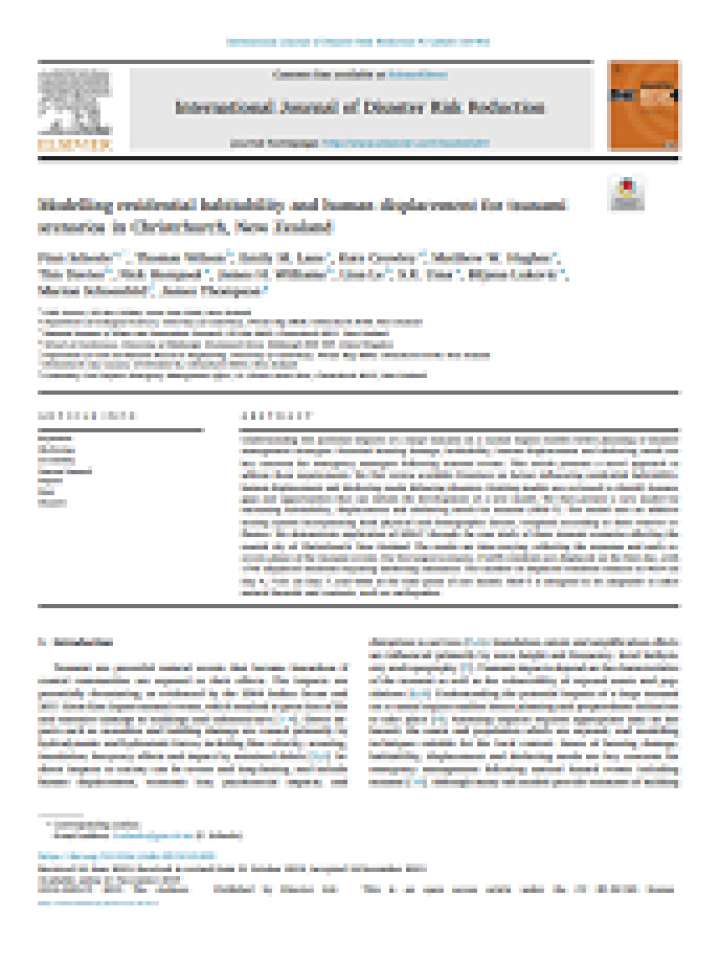Modelling residential habitability and human displacement for tsunami scenarios in Christchurch, New Zealand
This article presents a novel approach to addressing potential housing damage, habitability, human displacement and sheltering needs following tsunami events. Existing models are reviewed to identify lessons, gaps and opportunities that can inform the development of a new model. A new model is then presented for estimating habitability, displacement and sheltering needs for tsunami (HDS-T). The model uses an additive scoring system incorporating both physical and demographic factors, weighted according to their relative influence.
Application of HDS-T through the case study of three tsunami scenarios affecting the coastal city of Christchurch, New Zealand is demonstrated. The results are time-varying, reflecting the response and early recovery phase of the tsunami events. For the largest scenario, 14,695 residents are displaced on the first day, with 1795 displaced residents requiring sheltering assistance. The number of displaced residents reduces to 9014 on Day 4, 7131 on Day 7, and 4366 at the time point of one month. HDS-T is designed to be adaptable to other natural hazards and contexts, such as earthquakes.
Explore further
